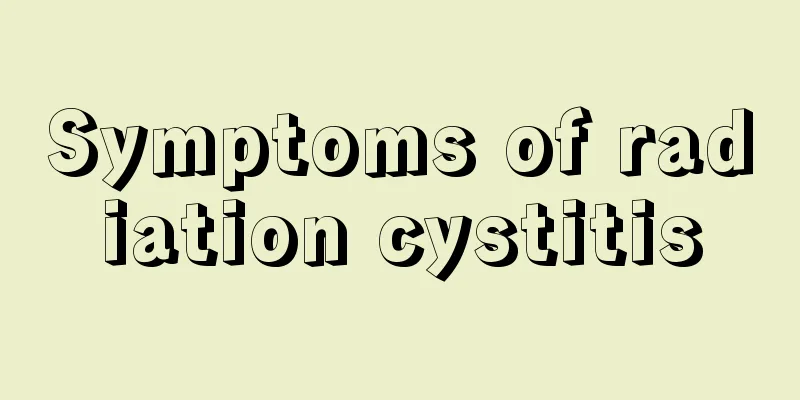A brief analysis of the high-risk population for common colorectal cancer

|
As the incidence of colorectal cancer continues to increase, more and more people are beginning to pay attention to the relevant knowledge of colorectal cancer, especially the high-risk populations for colorectal cancer . So who are the high-risk populations for colorectal cancer? The following will tell you about the common high-risk populations for colorectal cancer. Generally speaking, the high-risk groups for common colorectal cancer are: 1) Age: As age increases, the time that various pathogenic factors stimulate the large intestine mucosa also increases. Middle-aged and elderly people over 50 years old are a common high-risk group for colorectal cancer. 2) Family history: If a person's first-degree family member, such as a parent, has had colorectal cancer, his risk of developing the disease in his lifetime is 8 times higher than that of the general population [If one of your direct family members (parents, siblings or children) develops colorectal cancer before the age of 50, or if two or more people in your paternal or maternal family have developed colorectal cancer, then you have a family history of colorectal cancer]. People with a family history of colorectal cancer are also at high risk of colorectal cancer. 3) History of intestinal inflammatory diseases: Certain intestinal diseases such as Crohn's disease or ulcerative colitis may increase the chance of developing intestinal cancer. They are also a common high-risk group for intestinal cancer. Their risk of intestinal cancer is 30 times that of ordinary people. 4) History of colorectal polyps: Most colorectal cancers develop from small precancerous lesions, which are called polyps. Among them, villous adenomatous polyps are more likely to develop into cancer, with a malignant chance of about 25%; tubular adenomatous polyps have a malignant rate of 1-5%. Therefore, people with a history of colorectal polyps are also a common high-risk group for colorectal cancer. The above is an introduction to the high-risk groups for common colorectal cancer. I hope it will be helpful to everyone. For more questions about the high-risk groups for colorectal cancer, you can consult our online experts, who will answer them in detail. For more information, please visit the colorectal cancer topic at http://www..com.cn/zhongliu/ca/ or consult an expert for free. The expert will then give a detailed answer based on the patient's specific situation. |
<<: Experts explain the advantages of TCM in treating colorectal cancer
>>: What are the symptoms of bladder cancer in the late stage?
Recommend
What are the common symptoms of fibroids?
Fibroid is one of the more common benign tumors. ...
At what point does the lung detoxify?
The lungs are very important respiratory organs i...
What is the disease that causes pale lips?
A normal person's lips should be white with a...
Tips for cleaning fish tank feces
Many people like to raise fish. For those who rai...
Can mulberry leaves and lotus leaves be drunk together
Everyone is very familiar with mulberry leaves, e...
How to resolve the problem of Tai Sui?
People often talk about Tai Sui, which refers to ...
Will staying up late cause brain cancer?
Staying up late for a long time is likely to caus...
How to treat cerebral hemisphere tumors? What are the treatments for cerebral hemisphere tumors?
The clinical manifestations of tumors in differen...
Shock! Staying in bed in early spring may lead to early menopause
Staying in bed reduces hearing and memory General...
The harm of sebaceous adenoma, sebaceous adenoma is very harmful
Generally speaking, sebaceous adenoma often occur...
Treatment for snoring apnea
There are many people around us who snore frequen...
What are the early symptoms and signs of breast cancer? How many years can you live after early breast cancer removal
Breast cancer is a malignant tumor that occurs in...
Will testicular cancer kill you in the late stages?
Due to the continuous improvement of living stand...
Does safflower oil have any effect on pregnant women?
I believe everyone is familiar with safflower oil...
How many kinds of tea are there
We should all be familiar with tea. It has high n...









